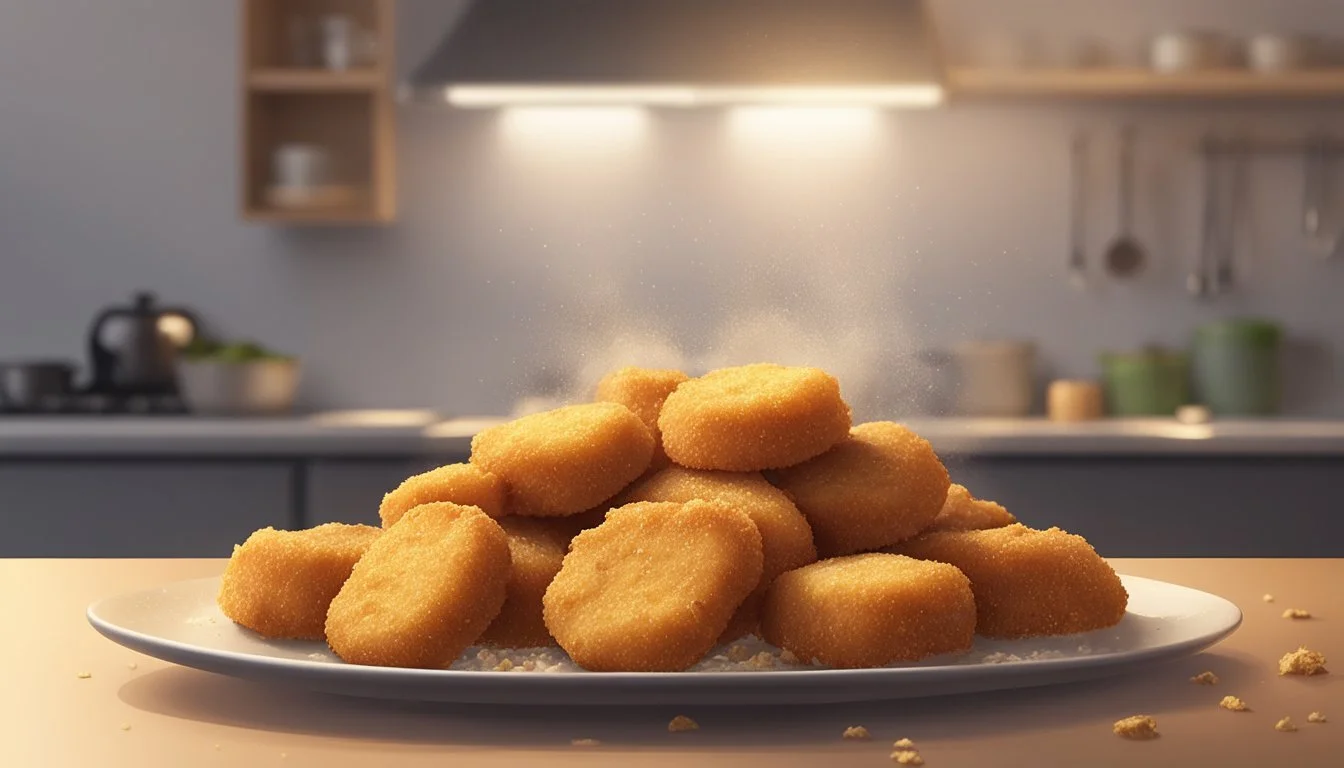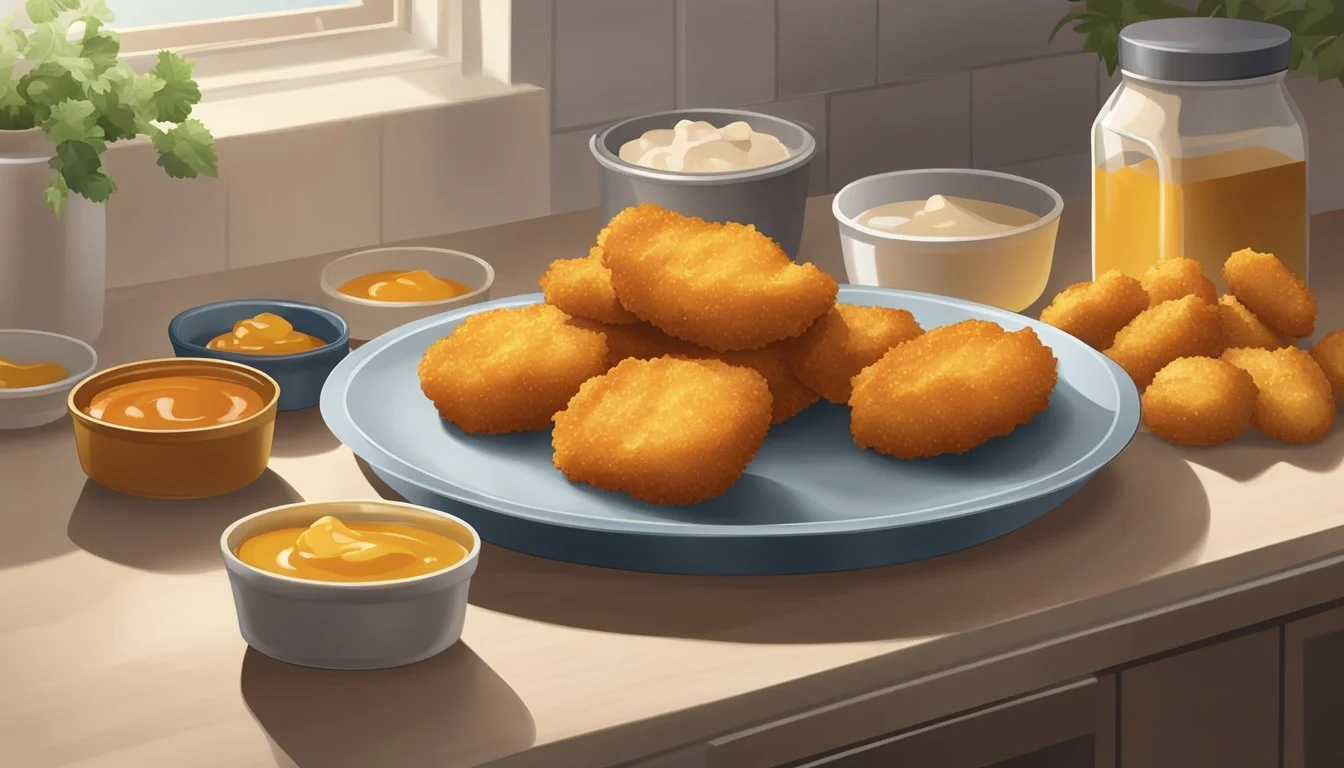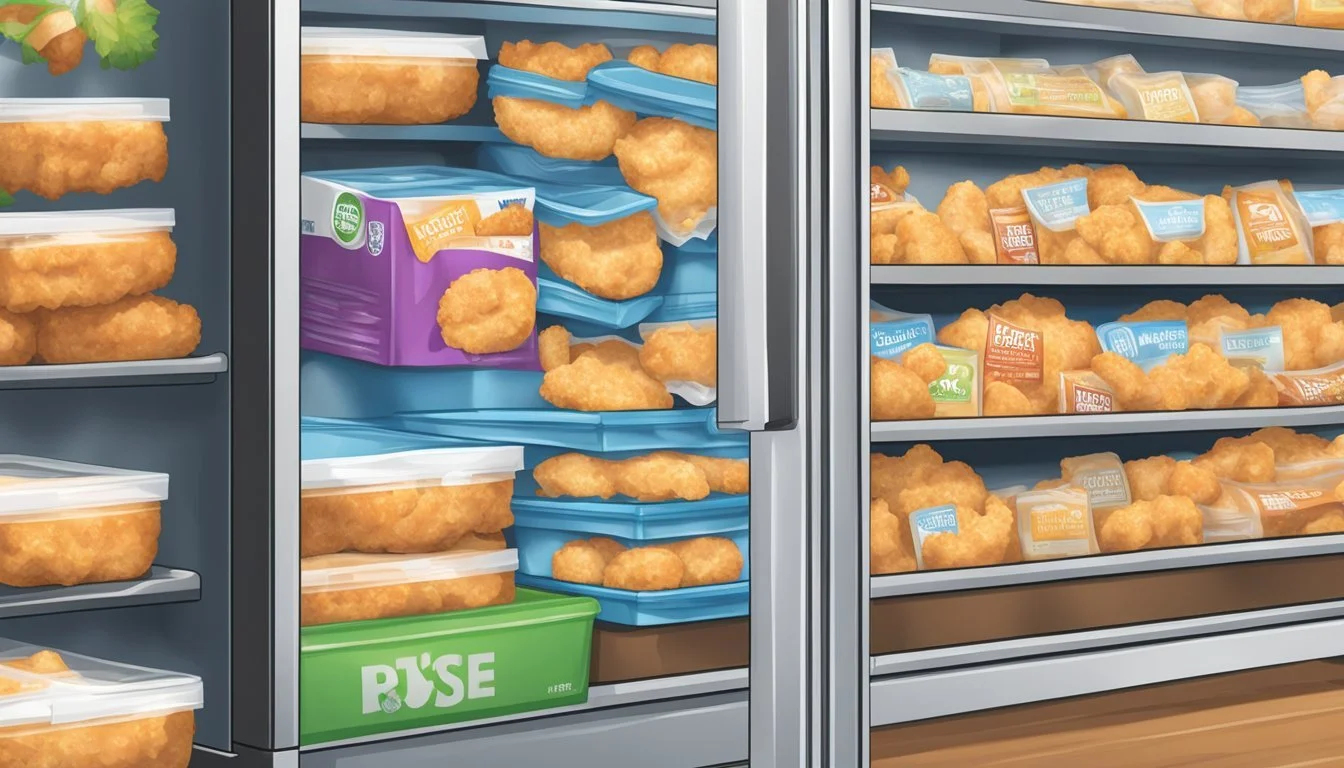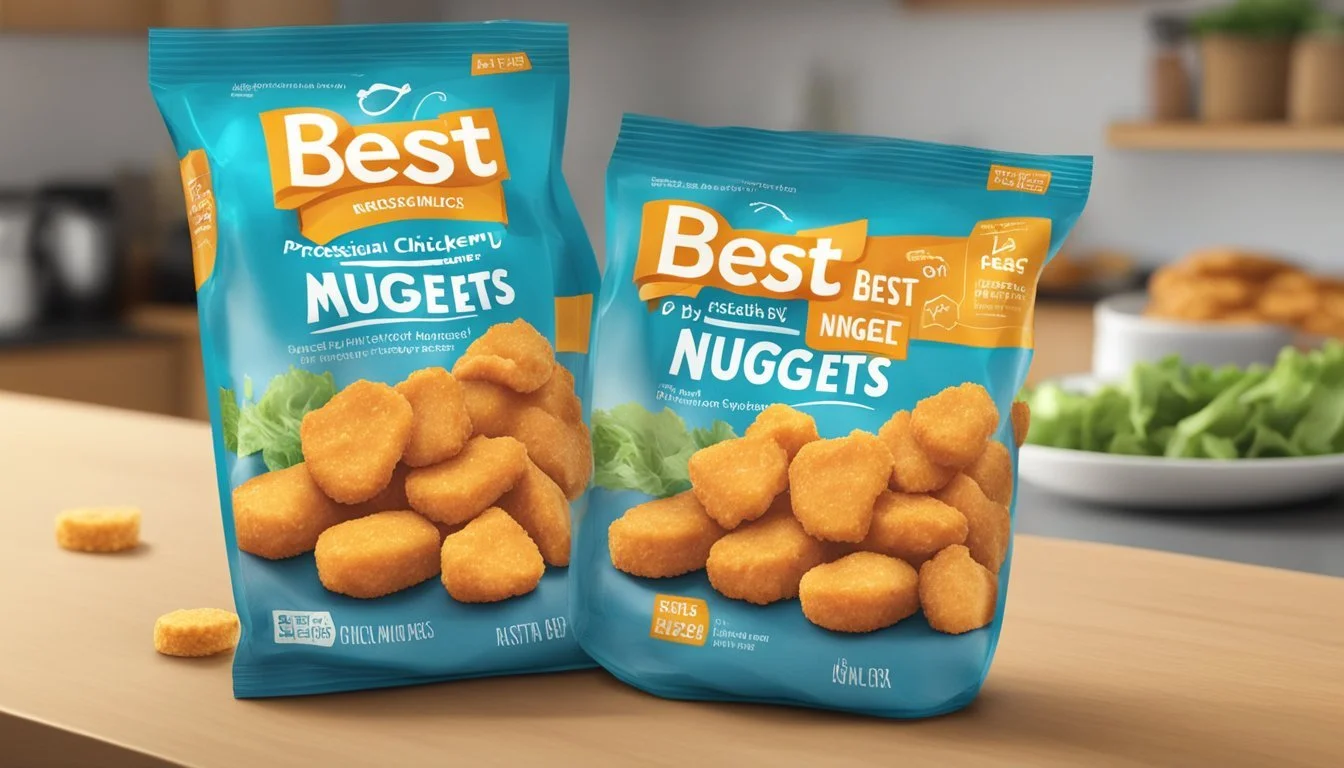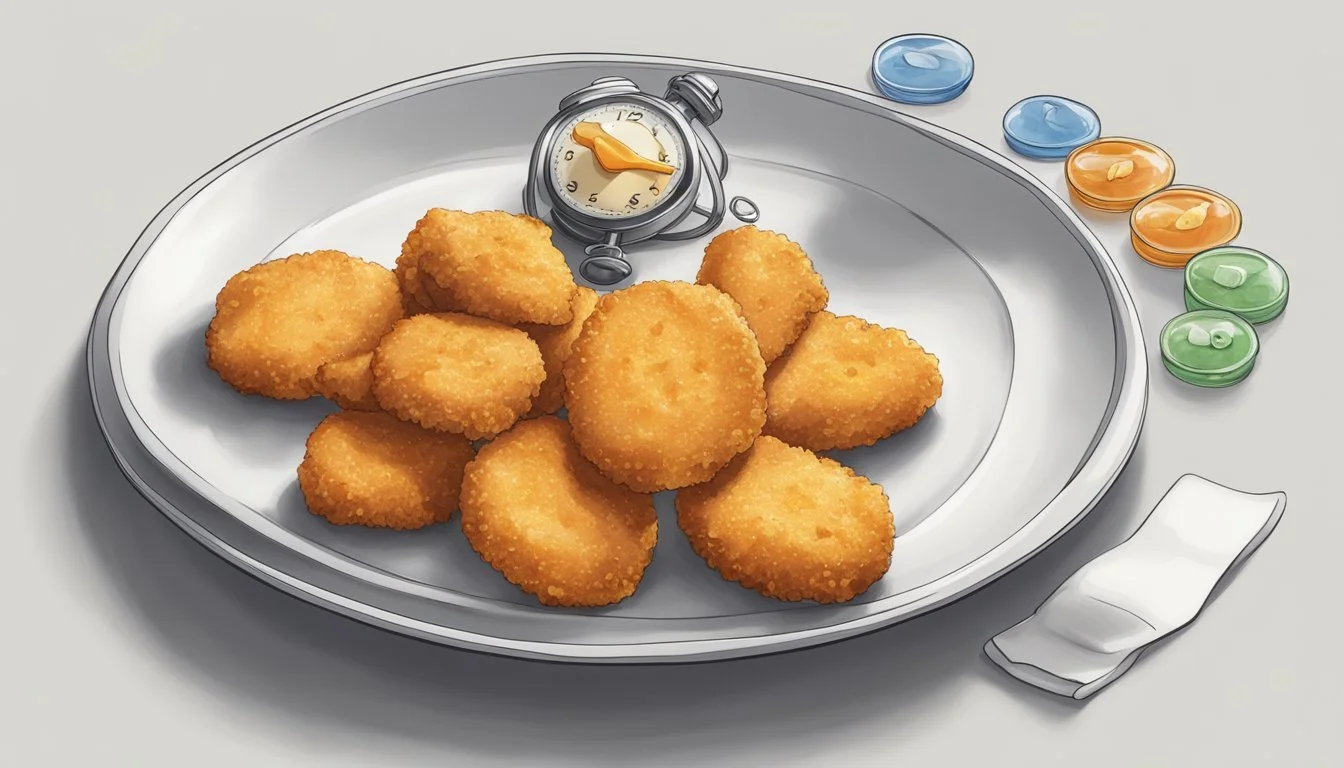How Long Do Chicken Nuggets Last?
Shelf Life and Storage Tips
Chicken nuggets can be a convenient and tasty meal option, but understanding their shelf life is crucial for ensuring food safety. When stored properly in the refrigerator, cooked chicken nuggets typically last for about 1 to 2 days. For those seeking a longer storage solution, frozen chicken nuggets can maintain their best quality for up to 6 months. Proper packaging and consistent storage conditions are key factors in preserving their freshness.
It's important to note that leaving cooked chicken nuggets at room temperature for more than 2 hours can significantly increase the risk of bacterial growth, making them unsafe to consume. Ensuring they are promptly refrigerated or frozen is essential. Uncooked chicken nuggets should be stored in the refrigerator for no more than 1 to 2 days before cooking or moving them to the freezer.
Food safety experts recommend consuming chicken nuggets within these timeframes to avoid potential foodborne illnesses. Checking expiration dates and adhering to storage guidelines helps maintain the quality and safety of this popular snack.
Understanding Chicken Nuggets
Chicken nuggets vary based on their type, composition, and the preservatives used. Each aspect affects their taste, texture, and shelf life.
Types of Chicken Nuggets
Chicken nuggets come in various types, primarily categorized as homemade, store-bought, and fast food. Homemade nuggets are made from scratch, usually with fresh ingredients and fewer preservatives. Store-bought nuggets are often frozen with added preservatives to extend shelf life. Fast food nuggets are typically prepared quickly and meant to be consumed soon after cooking. Each type has unique qualities, impacting how long they stay fresh when stored.
Composition and Preservatives
The composition of chicken nuggets includes chicken meat, breading, and seasonings. Preservatives like sodium phosphate, nitrates, and BHT are commonly used in store-bought and fast food varieties to prolong shelf life. These chemicals help prevent spoilage and maintain texture and flavor. Homemade nuggets, on the other hand, rely on fresh ingredients and usually contain fewer preservatives, making them healthier but with a shorter shelf life. Understanding these differences is essential for making informed choices about consumption and storage.
Food Safety Basics
Proper handling, storage, and cooking of chicken nuggets are crucial to prevent bacterial contamination and ensure they are safe to eat. Factors affecting bacterial growth and recognizing spoilage signs are critical for food safety.
Bacterial Growth Factors
Bacterial growth in chicken nuggets can be influenced by several factors. Temperature plays a significant role, with bacteria growing rapidly between 40°F and 140°F, known as the "danger zone." Chicken nuggets left at room temperature for more than two hours, or longer in warmer conditions, can quickly become unsafe.
Moisture and nutrients in chicken nuggets provide an ideal environment for bacteria like Salmonella and Staphylococcus aureus. Proper refrigeration, ideally below 40°F, can slow bacterial growth and extend the nuggets' edibility for 3-4 days.
Storage conditions are also crucial. Chicken nuggets should be stored in airtight containers to reduce exposure to air and potential contaminants. Cooking methods and cleanliness during preparation can further impact safety, underscoring the importance of thorough cooking to an internal temperature of 165°F.
Signs of Spoilage
Identifying spoiled chicken nuggets is essential to avoid food poisoning. Spoiled nuggets often exhibit noticeable changes in smell, texture, and appearance. A sour or off odor is a common sign that bacteria have proliferated.
Changes in texture, such as sliminess or a sticky residue, indicate spoilage. Additionally, discoloration, such as grey or greenish hues, signals that the chicken nuggets are no longer safe to eat.
Symptoms of foodborne illness from spoiled chicken include nausea, vomiting, diarrhea, and abdominal cramps. If any signs of spoilage are detected, it is safest to discard the chicken nuggets rather than risk potential food poisoning.
In summary, understanding bacterial growth factors and recognizing spoilage signs are key to maintaining chicken nugget safety and preventing illness.
Storage Guidelines
Proper storage is crucial for maintaining the quality and safety of chicken nuggets. Key factors include refrigeration best practices, freezing techniques, airtight containers, and shelf life considerations.
Refrigeration Best Practices
Chicken nuggets should be refrigerated promptly. Generally, cooked nuggets should be placed in the fridge within two hours of cooking.
For optimal storage, nuggets must be kept at or below 40°F (4°C). This helps prevent bacterial growth.
Using a food-safe container or a zip-top plastic bag can help maintain freshness. Be sure to label and date the container. Refrigerated chicken nuggets typically last 3-4 days.
Freezing and Freezer Storage
Freezing extends the shelf life of chicken nuggets significantly. For best quality, place nuggets in the freezer immediately if not consuming within a few days.
Use heavy-duty freezer bags, plastic wrap, or aluminum foil to protect from freezer burn. Set the freezer to 0°F (-18°C) or lower to maintain safety and quality.
Properly packaged chicken nuggets can last up to 1-3 months. Label the packages with the date of freezing to track their age.
Airtight Containers and Packaging
Using airtight containers is essential for preserving chicken nuggets. Airtight containers prevent moisture and contaminants from entering, reducing spoilage.
When refrigerating, opt for food-safe plastic or glass containers with tight-fitting lids. For freezing, use heavy-duty freezer bags or wrap tightly in plastic wrap followed by aluminum foil to avoid freezer burn.
Secure packaging not only extends shelf life but also maintains the texture and taste of the nuggets.
Shelf Life Considerations
Shelf life depends on storage conditions and methods. In the fridge, chicken nuggets should be consumed within 3-4 days.
Freezing extends this period significantly; frozen nuggets can last up to 3 months without quality degradation. Pay attention to signs of spoilage like off smells, slimy textures, or visible mold.
Always use the first in, first out (FIFO) method: consume older items before newer ones to minimize waste and ensure freshness.
Quality Preservation
Ensuring the quality of chicken nuggets involves both maintaining their taste and texture and properly managing storage methods to prevent freezer burn and optimize thawing procedures.
Freezer Burn Prevention
Freezer burn can drastically affect the taste and texture of chicken nuggets. To prevent freezer burn, store the nuggets in airtight containers or heavy-duty freezer bags. Removing as much air as possible from the packaging is crucial.
Labeling the containers with the date of freezing helps in keeping track of storage time to ensure that the nuggets are consumed within the optimal period. Additionally, placing the nuggets in the coldest part of the freezer can enhance their shelf life by maintaining a consistent temperature.
Thawing Procedures
Proper thawing is important to preserve the quality of chicken nuggets. To thaw safely and maintain the best texture and taste, it is advisable to transfer the nuggets from the freezer to the refrigerator. This process should be done a day before they are needed, allowing the nuggets to thaw slowly and evenly.
Using a microwave for rapid thawing can lead to uneven thawing and potential loss of quality. For quicker defrosting, placing the nuggets in a sealed bag and submerging them in cold water is an effective method. Always ensure the nuggets are cooked immediately after thawing to maintain their freshness.
Safe Consumption
Ensuring that chicken nuggets are safe to eat involves understanding proper storage times, handling leftovers correctly, and taking measures to avoid foodborne illnesses.
Determining Edibility
Chicken nuggets can be safely kept in the refrigerator for up to 3-4 days. To determine if they are still safe to consume, check for signs such as unusual odor, discoloration, or slimy texture. If any of these are present, it's best to discard them. Always check the expiration date and consider the cooking method and storage conditions. Proper packaging, such as airtight containers, can help maintain edibility for the maximum duration.
Handling Leftovers
When dealing with leftover chicken nuggets, it's crucial to handle them properly to ensure they remain safe to eat. Refrigerate leftovers within two hours of cooking to limit bacterial growth. Store them in airtight containers or tightly wrapped in plastic wrap or aluminum foil. Reheat leftovers to an internal temperature of 165°F (74°C) to kill any bacteria that might have grown. Avoid repeated reheating and cooling, as this can encourage bacterial growth and spoilage.
Avoiding Foodborne Illness
Preventing foodborne illness requires stringent food safety practices. Contaminated chicken can lead to illnesses such as salmonella and campylobacter infections. Always wash your hands before and after handling chicken nuggets. Use separate cutting boards and utensils for raw and cooked chicken. When reheating, ensure that the nuggets reach a safe internal temperature of 165°F (74°C). Storing them below 40°F (4°C) in the fridge can also slow down bacterial growth. Following these steps can help minimize the risk of foodborne illness and ensure the nuggets are safe to consume.
Preparing and Reheating
Reheating chicken nuggets can be done efficiently with a microwave, conventional oven, or air fryer. Each method has its unique steps and considerations for preserving the texture and flavor of the nuggets.
Microwave Usage
The microwave offers a quick way to reheat chicken nuggets. Place the nuggets on a microwave-safe plate. Sprinkle them lightly with water or cover with a damp paper towel to avoid drying out. Heat on high for 2-3 minutes, checking halfway through to prevent overcooking. Turn the nuggets over if necessary to ensure even heating. Be cautious not to overheat, as this can lead to rubbery nuggets.
Conventional Oven Recommendations
Using a conventional oven helps maintain the crispiness of the nuggets. Preheat the oven to 350°F (175°C). Arrange the nuggets on a baking sheet lined with parchment paper or aluminum foil. Place them in a single layer. Bake for 8-10 minutes, flipping them once halfway through. This method provides a balance of thorough reheating without compromising the texture, allowing the nuggets to stay crispy on the outside and tender on the inside.
Air Fryer Techniques
The air fryer is an excellent tool for ensuring a crispy finish. Preheat the air fryer to 375°F (190°C) for a few minutes. Arrange the nuggets in the basket without overlapping. Cook for 5-6 minutes, shaking the basket halfway through to ensure even cooking. The result is a texture similar to freshly cooked nuggets, crispy on the outside while maintaining a juicy interior. The air fryer is particularly effective for this task due to its rapid air circulation.
Recognizing Bad Chicken Nuggets
Detecting spoiled chicken nuggets relies on visual, olfactory, and textural clues to ensure safety and avoid foodborne illness. Here is what to look for:
Visual Inspection
Spoiled chicken nuggets often have noticeable changes in appearance. Discoloration is a key indicator; fresh nuggets should look as expected or light golden brown, while spoiled ones may appear gray, green, or exhibit spots of mold.
Dryness can set in as well—observe any dried-out or shriveled areas, particularly if they were improperly stored. Fresh nuggets should maintain a consistent, appetizing color and should not look dried out or off-color.
Olfactory Assessment
A bad smell is a strong sign that chicken nuggets have spoiled. Fresh nuggets should not carry any strong odor other than the spices or herbs used during cooking.
Off smells like sourness, acidity, or a rotten scent indicate bacterial growth. It is important to trust the sense of smell; even a faint off odor can signify spoilage and the potential risk of consuming unsafe food.
Texture Analysis
The texture of chicken nuggets changes noticeably when they spoil. Fresh nuggets should feel slightly crisp on the surface and firm inside.
Sliminess is a clear red flag—smooth and slippery textures often result from bacterial activity. If nuggets feel unusually soft, mushy, or sticky to the touch, they have likely gone bad. Always ensure that nuggets maintain their original, intended firmness and surface texture.
Disposal and Safety Concerns
Proper disposal and safety measures are crucial to avoid health risks related to eating perishable foods like chicken nuggets. Ensuring safe handling can prevent foodborne illnesses and maintain food quality.
When to Discard
Cooked chicken nuggets typically last 3-4 days in the refrigerator. They should be discarded if they exhibit signs of spoilage, such as a sour smell or a slimy texture. Moldy chicken nuggets are a clear indicator that they are no longer safe to eat and must be thrown away immediately.
If chicken nuggets have been left at room temperature for over 2 hours, they fall into the "danger zone" where bacteria grow rapidly. Frozen chicken nuggets can last longer, about 1-3 months, but should also be checked for freezer burn or damaged packaging.
Cross-Contamination Prevention
To prevent cross-contamination, store chicken nuggets in airtight containers and keep them separate from raw meats and other perishable foods. Use clean utensils and surfaces when handling and cooking to reduce the risk of bacteria spreading.
Cross-contamination can also occur in the fridge if cooked and raw foods are stored improperly. Raw food should always be kept on lower shelves to prevent their juices from dripping onto ready-to-eat foods like cooked chicken nuggets. This simple step can significantly reduce the risk of contamination.

